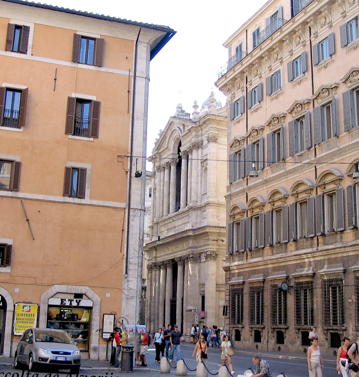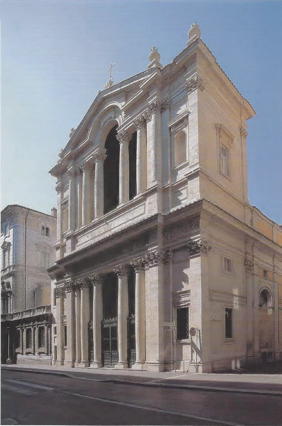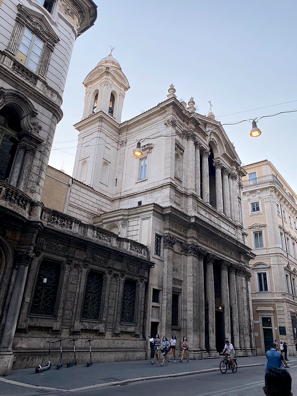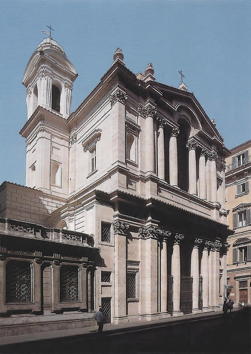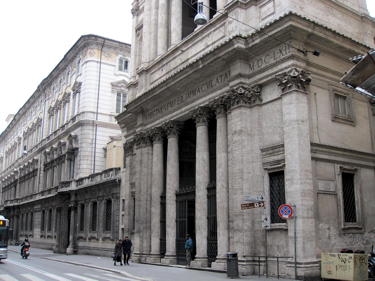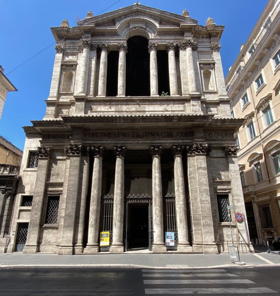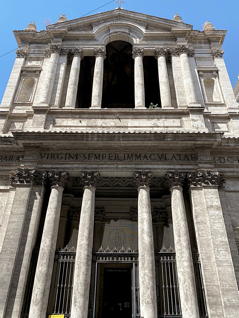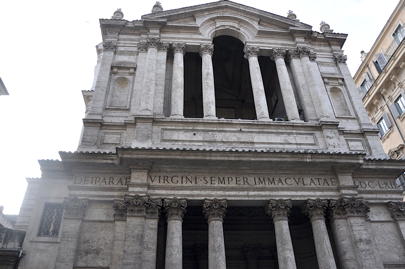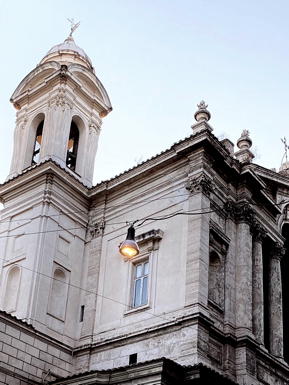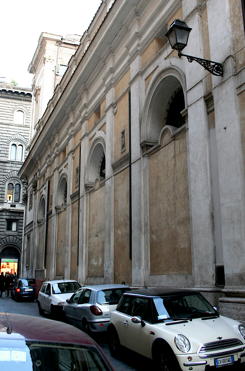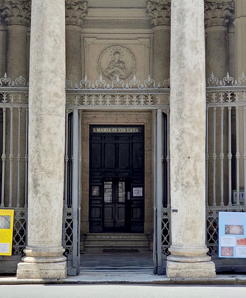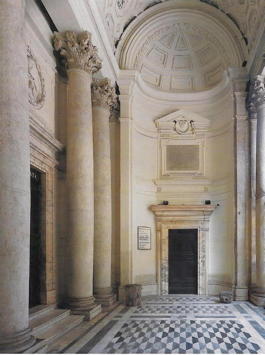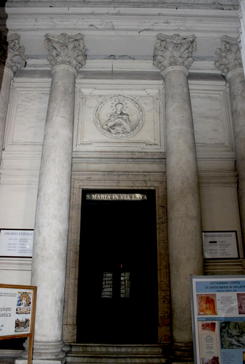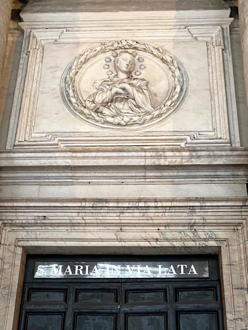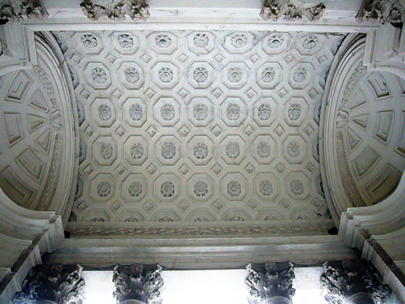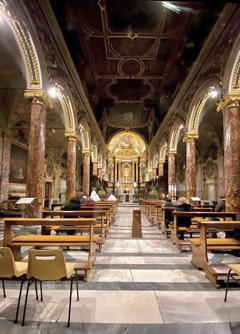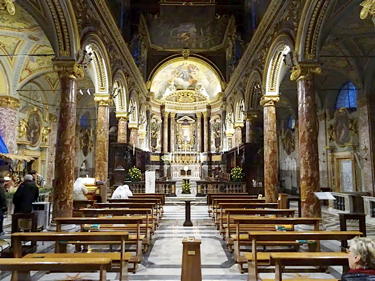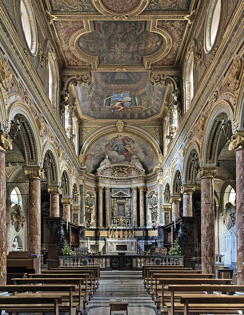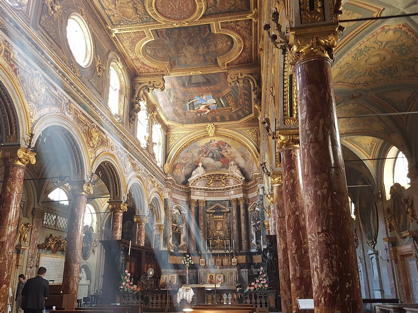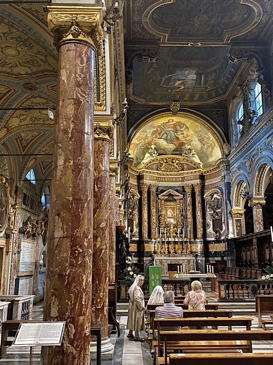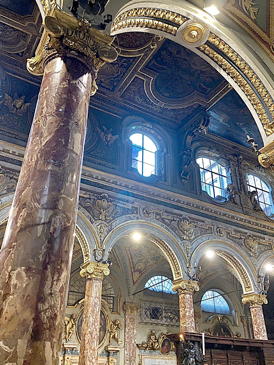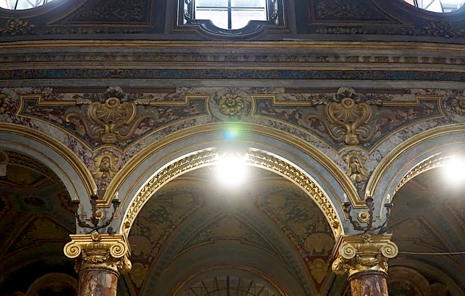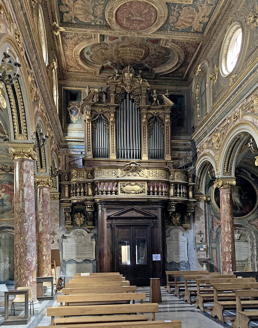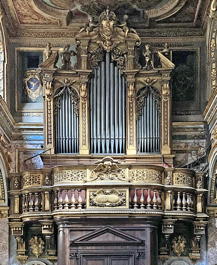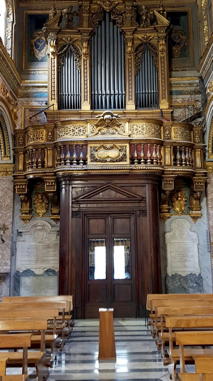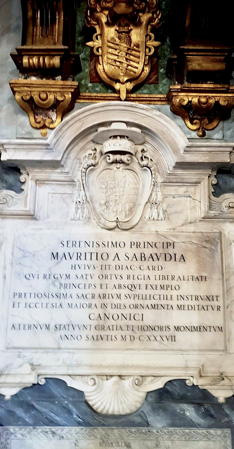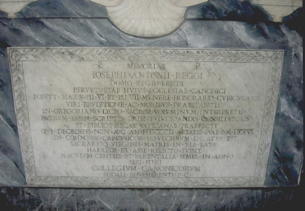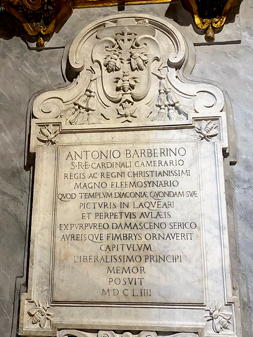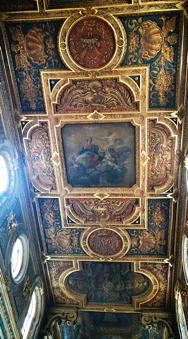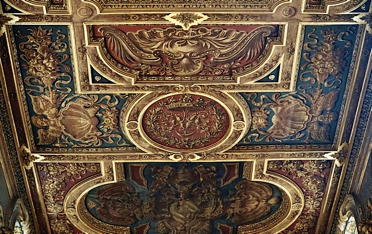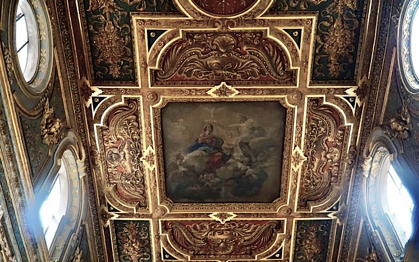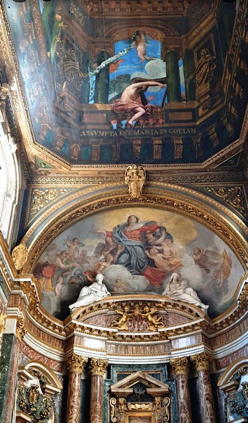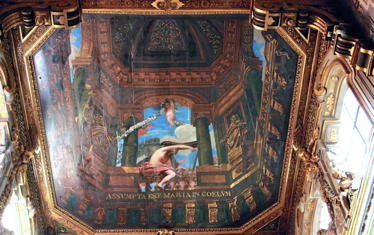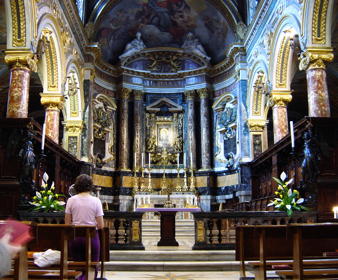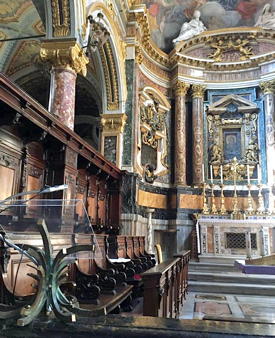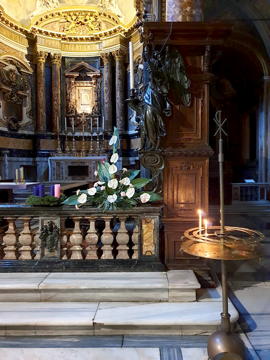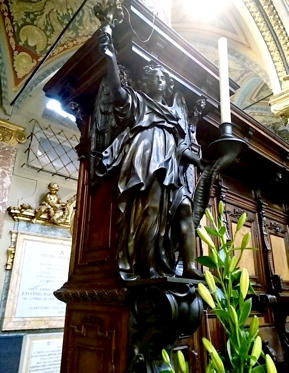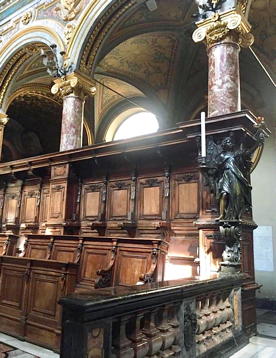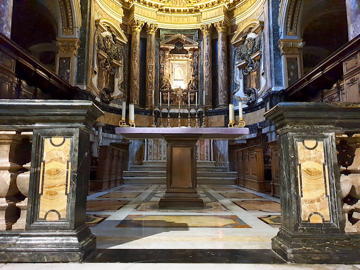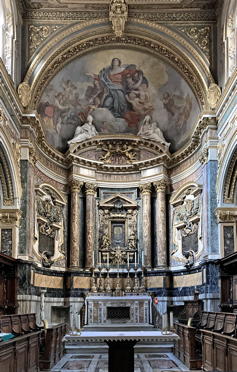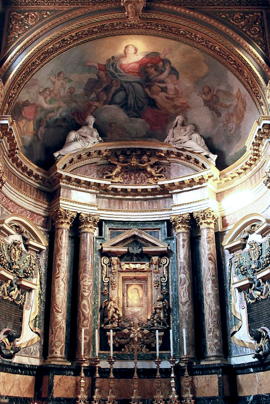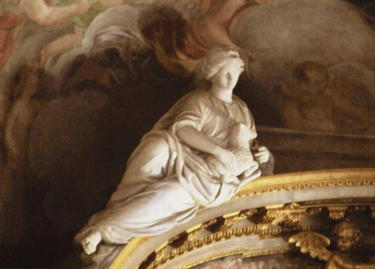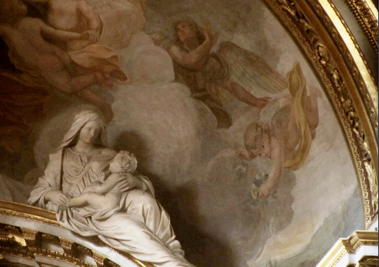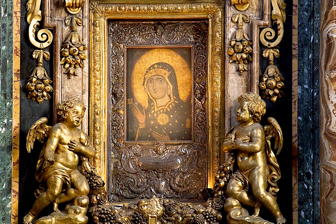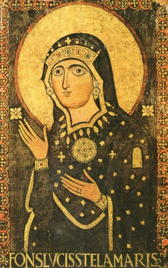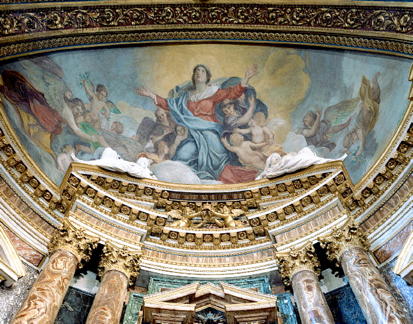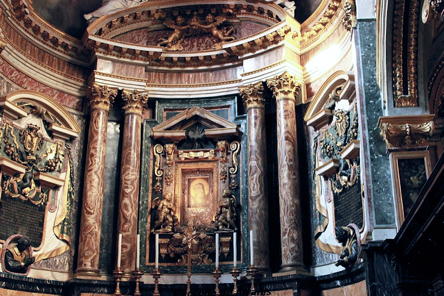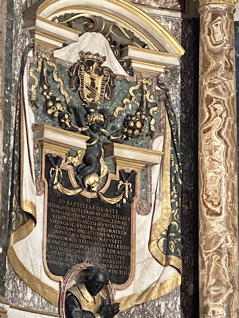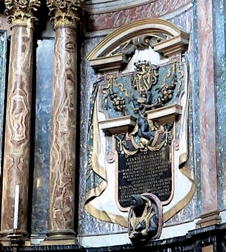Santa Maria in Via Lata is a 17th century minor basilica and titular church of ancient foundation on Via del Corso in the rione Pigna (IX), adjacent to the Palazzo Doria Pamphilj. The dedication is to the Blessed Virgin Mary under her title of Our Lady, Advocate (Madonna Advocata).
This is the station churche for the Tuesday of the 5th week of Lent.
For reference, a plan of the church is available
here.
According to a strong tradition, the church stands on a site where St. Paul is said to have spent two years of his imprisonment here under house arrest and also to have written the Letters to Timothy, Titus, Philemon, and possibley Hebrews while living here. If this is true, then it was here that Paul converted Onesimus to the Faith. Some add that St. Luke, and perhaps even St. John the Evangelist, might have stayed here for a time as well.
The first Christian place of worship here was a 5th century oratory in the Roman building beneath the present church. This was constructed within the remains of a large Roman warehouse, some 250 metres long, which has also been excavated. The church's upper level was added in the 9th century, and murals added to the lower level between the 7th and 9th centuries. It is mentioned many times in the Liber Pontificalis, but the ancient structure had fallen into ruins by the beginning of the seventeenth century.
The church was rebuilt by Sergius I (687-701) but continuous flooding by the Tiber made the foundations unsafe. Nevertheless, another church was completed here by Leo IX (1049-1054). At the end of the fifteenth century, Innocent VIII (1484-1492) rebuilt the church again, in the form that we see it today. At this time the Triumphal Arch of Diocletian, the Arcus Novus, was also demolished, which once stood near the current location of the front doors of the church.
Between 1580 and the beginning of the 18th century works were performed to embellish the structure. Between 1639 and 1643 the sumptuous apse was constructed according to a design by Bernini. The current façade, complementing the surrounding palace of the Doria-Pamphilij family, was built between 1658 and 1662, with the lower church being restored at the same time. Decoration continued into the early eighteenth century, giving us the current appearance. Between the end of the 17th century and the beginning of the 18th century most of the paintings adorning the interior were created.
